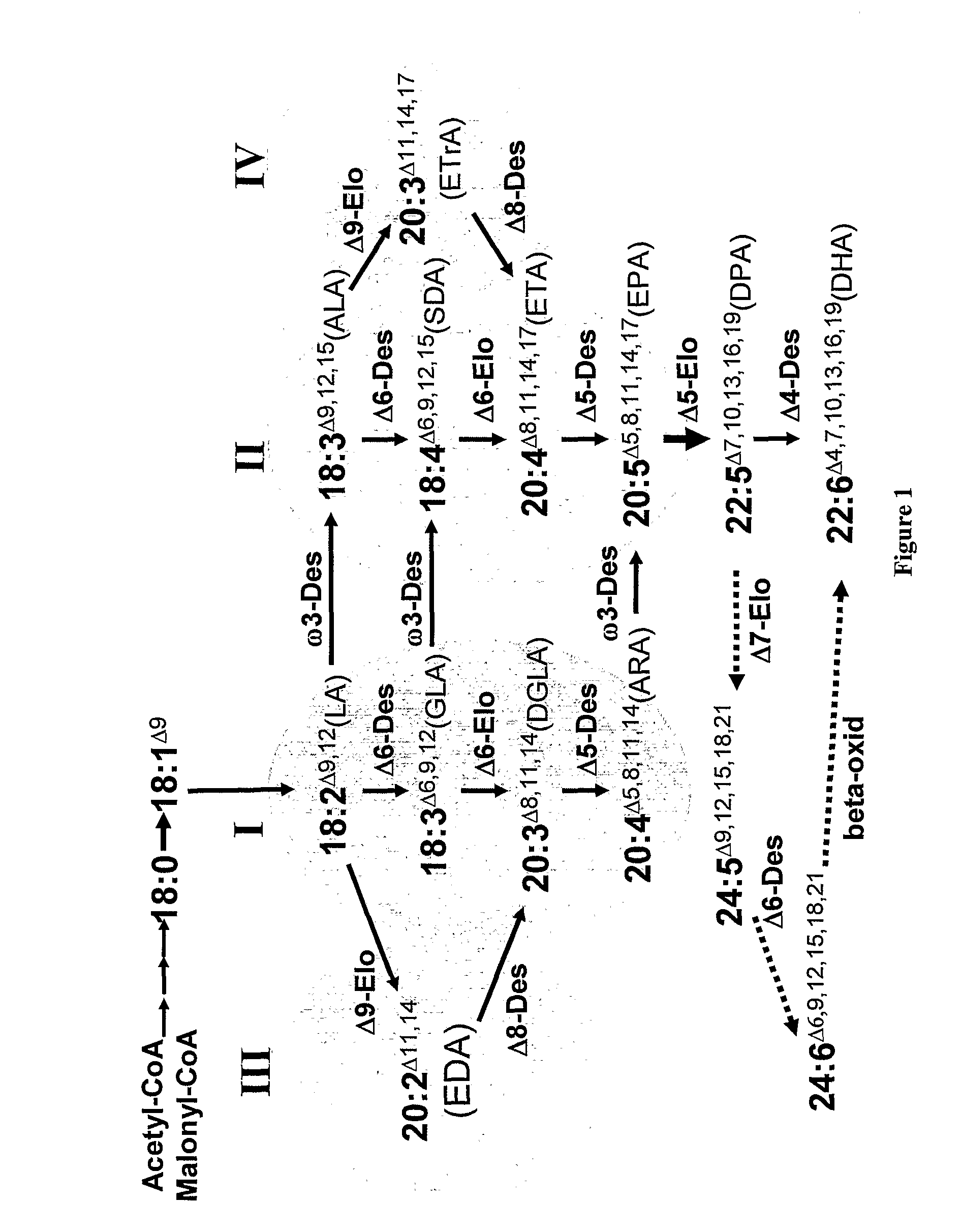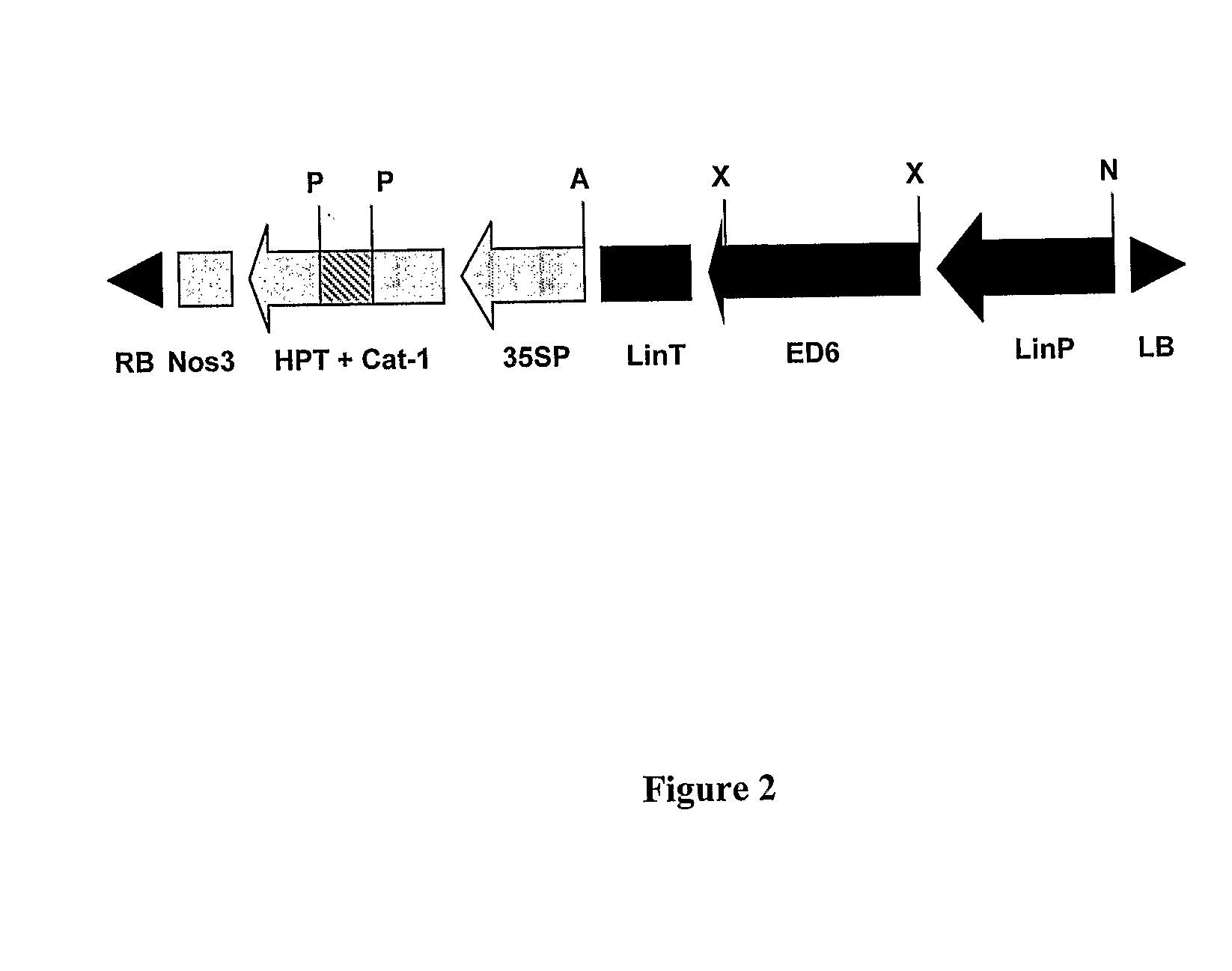Feedstuffs for Aquaculture Comprising Stearidonic Acid
a technology of stearidonic acid and feedstuffs, which is applied in the field of feedstuffs for aquaculture comprising stearidonic acid, can solve the problems of reducing health benefits for consumers, difficult to achieve, and the potential to dilute important cardiovascular and other benefits, and achieves high levels of 6 desaturase pufa products
- Summary
- Abstract
- Description
- Claims
- Application Information
AI Technical Summary
Benefits of technology
Problems solved by technology
Method used
Image
Examples
example 1
Materials and Methods
Lipid Extraction and Isolation
[0122]Samples were freeze dried and extracted using a modified Bligh and Dyer protocol (Bligh and Dyer, 1959). A single phase extraction, CHCl3 / MeOH / H2O, (1:1:0.9, by vol), was used to yield a total lipid extract (TLE).
[0123]Lipid classes were analysed by an Iatroscan MK V thin-layer chromatography-flame ionization detector (TLC-FID) analyser (Iatron Laboratories, Japan). Samples were spotted onto silica gel SIII Chromarods (5 μm particles size) and developed in a glass tank lined with pre-extracted filter paper. The solvent system used for the lipid separation was hexane: diethyl ether: acetic acid (60:17:0.1, v / v / v) (Volkman and Nichols, 1991). After development for 25 minutes, the chromarods were oven-dried and analysed immediately to minimise adsorption of atmospheric contaminants. Lipid classes were quantified by DAPA software (Kalamunda, WA, Australia). The FID was calibrated for each compound class: phosphatidylcholine; chole...
example 2
Fish Fed with Food Compositions Including Plant-Derived SDA
[0138]Stearidonic acid (SDA, 18:4 ω3) is an LC-PUFA precursor, derived by desaturation of ALA by Δ6 desaturase (FIG. 1). The Δ6 desaturase is also involved other steps in the biosynthesis of LC-PUFA in the formation of DHA from EPA in vertebrates (Yamazaki et al., 1992) and 18:2 ω6 to 20:4 ω6. Therefore it is possible that the Δ6 desaturation of ALA is out-competed by the ω6 pathway in fish and crustacea when diets contain high levels of 18:2 ω6, present in vegetable oils such as canola and sunflower.
[0139]Oil from a few plant sources such as Echium plantagineum have SDA in the fatty acid profile, up to about 15-20% as a percentage of the fatty acid in the oil. To determine whether SDA-rich oil might serve as an efficient substrate for ω3 LC-PUFA accumulation in fish, a feeding trial was conducted in vivo using salmon (Salmo salar L.).
Diets including an equivalent level of canola oil were used as a control source of ALA, as ...
example 3
Prawn and Lobster Feedstuffs
[0156]For feeding of lobsters, prawns or other crustacean with diets high in SDA oil, the following feed compositions can be used (Table 10). Values provided as g / kg dry matter.
PUM
| Property | Measurement | Unit |
|---|---|---|
| Fraction | aaaaa | aaaaa |
| Fraction | aaaaa | aaaaa |
| Fraction | aaaaa | aaaaa |
Abstract
Description
Claims
Application Information
 Login to View More
Login to View More - R&D
- Intellectual Property
- Life Sciences
- Materials
- Tech Scout
- Unparalleled Data Quality
- Higher Quality Content
- 60% Fewer Hallucinations
Browse by: Latest US Patents, China's latest patents, Technical Efficacy Thesaurus, Application Domain, Technology Topic, Popular Technical Reports.
© 2025 PatSnap. All rights reserved.Legal|Privacy policy|Modern Slavery Act Transparency Statement|Sitemap|About US| Contact US: help@patsnap.com



